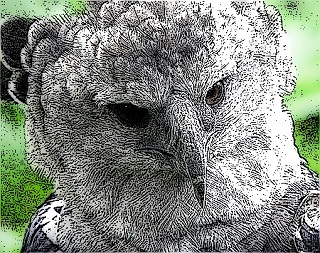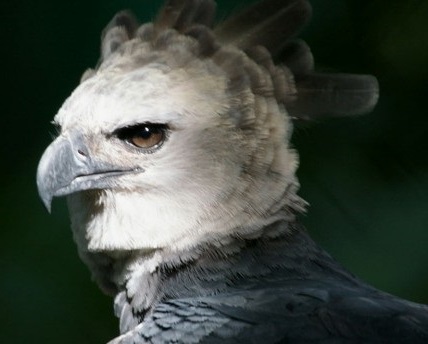
Meet the Harpy Eagle, a fierce hunter of monkeys and sloths living in the Manu region of Peru. Check out this amazing bird of prey by National Geo 🙂

Check this out too 🙂
20 Largest Birds of Prey
From big vicious vultures, to majestic eagles and condors; Here are 20 Largest Birds of Prey !
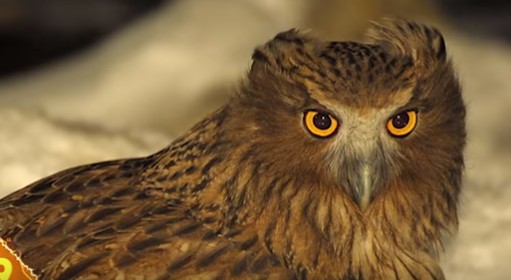
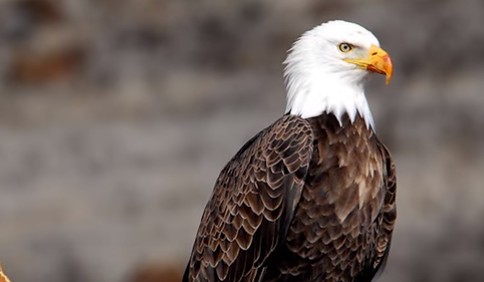
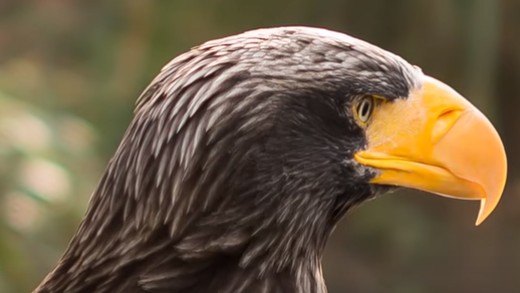
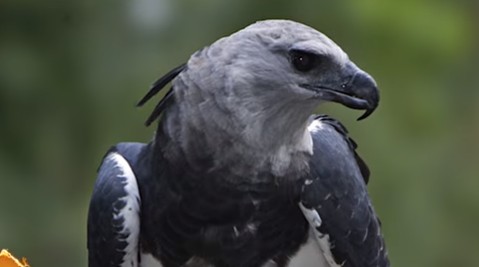
About Harpy Eagle
The harpy eagle (Harpia harpyja) is a neotropical species of eagle. It is also called the American harpy eagle to distinguish it from the Papuan eagle, which is sometimes known as the New Guinea harpy eagle or Papuan harpy eagle. It is the largest and most powerful raptor found in the rainforest, and among the largest extant species of eagles in the world.
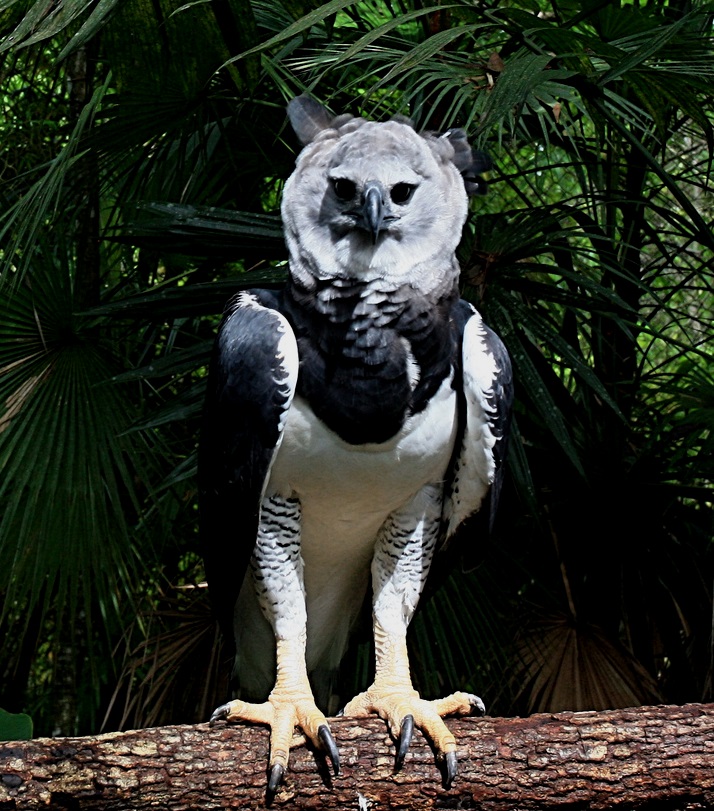
It usually inhabits tropical lowland rainforests in the upper (emergent) canopy layer. Destruction of its natural habitat has caused it to vanish from many parts of its former range, and it is nearly extirpated in Central America. In Brazil, the harpy eagle is also known as royal-hawk (in Portuguese: gavião-real)
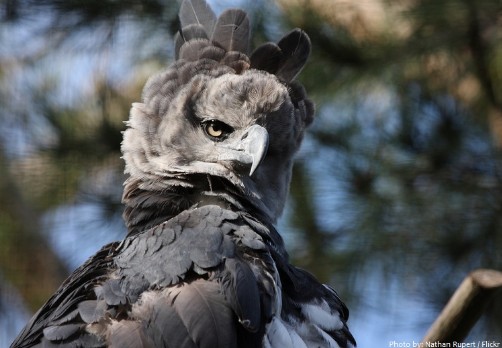
Taxonomy
The harpy eagle was first described by Linnaeus in his Systema Naturae in 1758 as Vultur harpyja, after the mythological beast harpy. The only member of the genus Harpia, the harpy eagle is most closely related to the crested eagle (Morphnus guianensis) and the New Guinea harpy eagle (Harpyopsis novaeguineae), the three composing the subfamily Harpiinae within the large family Accipitridae. Previously thought to be closely related, the Philippine eagle has been shown by DNA analysis to belong elsewhere in the raptor family, as it is related to the Circaetinae.
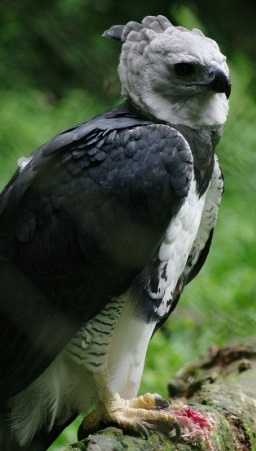
The species name harpyja and the word harpy in the common name harpy eagle both come from Ancient Greek hárpuia (ἅρπυια). They refer to the Harpies of Ancient Greek mythology. These were wind spirits that took the dead to Hades, and were said to have a body like an eagle and the face of a human.
Status and conservation
Although the harpy eagle still occurs over a considerable range, its distribution and populations have dwindled considerably. It is threatened primarily by habitat loss due to the expansion of logging, cattle ranching, agriculture, and prospecting. Secondarily, it is threatened by being hunted as an actual threat to livestock and/or a supposed one to human life, due to its great size. Although not actually known to prey on humans and only rarely on domestic stock, the species’ large size and nearly fearless behavior around humans reportedly make it an “irresistible target” for hunters. Such threats apply throughout its range, in large parts of which the bird has become a transient sight only; in Brazil, it was all but wiped out from the Atlantic rainforest and is only found in appreciable numbers in the most remote parts of the Amazon basin; a Brazilian journalistic account of the mid-1990s already complained that at the time it was only found in significant numbers in Brazilian territory on the northern side of the Equator. Scientific 1990s records, however, suggest that the harpy Atlantic Forest population may be migratory. Subsequent research in Brazil has established that, as of 2009, the harpy eagle, outside the Brazilian Amazon, is critically endangered in Espírito Santo,[46] São Paulo and Paraná, endangered in Rio de Janeiro, and probably extirpated in Rio Grande do Sul (where there is a recent (March 2015) record for the Parque Estadual do Turvo) and Minas Gerais – the actual size of their total population in Brazil is unknown.
Globally, the harpy eagle is considered Near Threatened by IUCN and threatened with extinction by CITES (appendix I). The Peregrine Fund until recently considered it a “conservation-dependent species”, meaning it depends on a dedicated effort for captive breeding and release to the wild, as well as habitat protection, to prevent it from reaching endangered status, but now has accepted the Near Threatened status. The harpy eagle is considered critically endangered in Mexico and Central America, where it has been extirpated in most of its former range; in Mexico, it used to be found as far north as Veracruz, but today probably occurs only in Chiapas in the Selva Zoque. It is considered as Near Threatened or Vulnerable in most of the South American portion of its range; at the southern extreme of its range, in Argentina, it is found only in the Parana Valley forests at the province of Misiones. It has disappeared from El Salvador, and almost so from Costa Rica.
Popular culture
The harpy eagle is the national bird of Panama and is depicted on the coat of arms of Panama. The 15th harpy eagle released in Belize, named “Hope”, was dubbed “Ambassador for Climate Change”, in light of the United Nations Climate Change Conference 2009.
The harpy eagle was the inspiration behind the design of Fawkes the Phoenix in the Harry Potter film series. A live harpy eagle was used to portray the now-extinct Haast’s eagle in BBC’s Monsters We Met.
Source: https://en.wikipedia.org/wiki/Harpy_eagle , YouTube
[tags]Eagle, harpy eagle, Manu region , Peru, natgeo, nationalGeographic, documentary, wildlife, amazingearth , bird of prey , National Geo , yourtube,Wild Kingdom[/tags]
